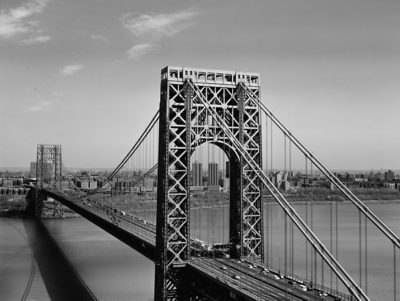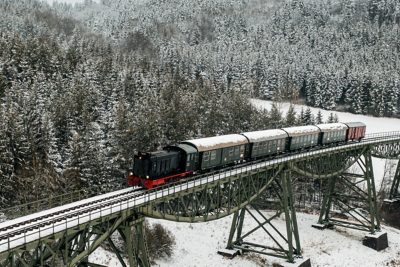Why am I fascinated by this book? Of course, I am interested in technology. But in it I came across an article about the successful bridge builder Othmar Ammann from Feuerthalen, the Iron Library's neighbouring village.
"The bridge builder is coming" was the big topic of conversation among my playmates in Thayngen. Of course, I didn't know who it was. The only bridge I knew was the road overpass over the railway tracks. And then a lean, elderly gentleman got out of his road cruiser with an American licence plate. This is what a bridge builder looks like, I thought to myself. How did that happen? Well, Othmar Ammann's late brother was a pastor in Thayngen and so he visited his niece who lived in my neighbourhood.
Othmar Ammann studied at the ETH Zurich. There he had already been intensively involved with the construction of bridges in the USA. His pioneering achievement was that he not only focussed on function but also on aesthetics. For example, he built the George Washington Bridge (1931) over the Hudson River in New York with a span twice as large as previously known. In doing so, he laid the foundation for further successful major projects.
The book also looks at the development and construction of steel and concrete in the 19th and 20th centuries. It shows how Eiffel also utilised the existing calculation principles for his Eiffel Tower for the 1889 World Exhibition in Paris. Incidentally, there is also a connection to ETH Zurich, as it was not Eiffel who came up with the idea for the iron tower, but his colleague Maurice Köchlin, who studied at the ETH. "No Eiffel Tower without Köchlin" is written in another document.
The book then ends with the development of prestressed concrete for bridges using the example of the Ganter Bridge (1980) on the Simplon Pass by Christian Menn.




